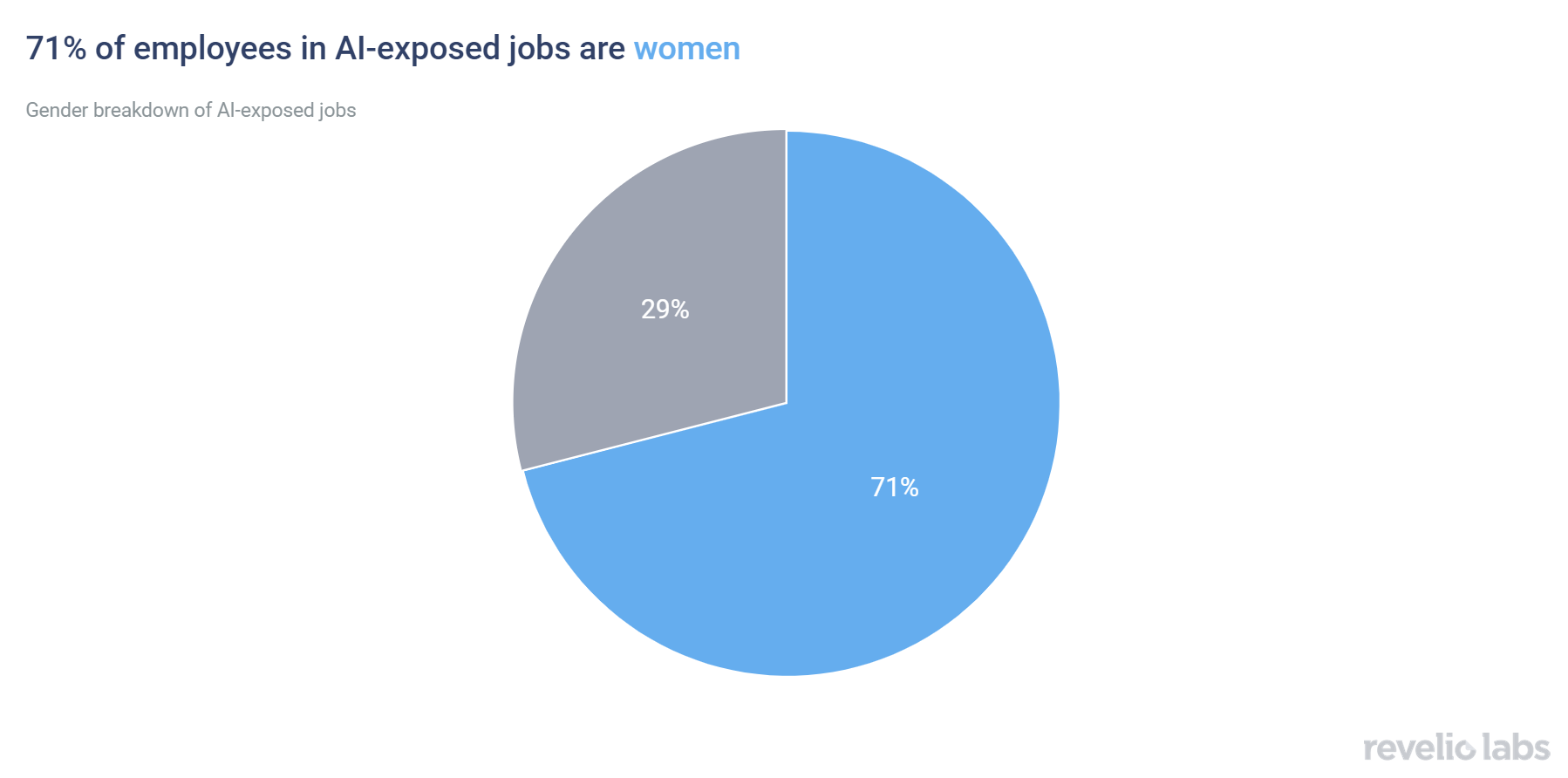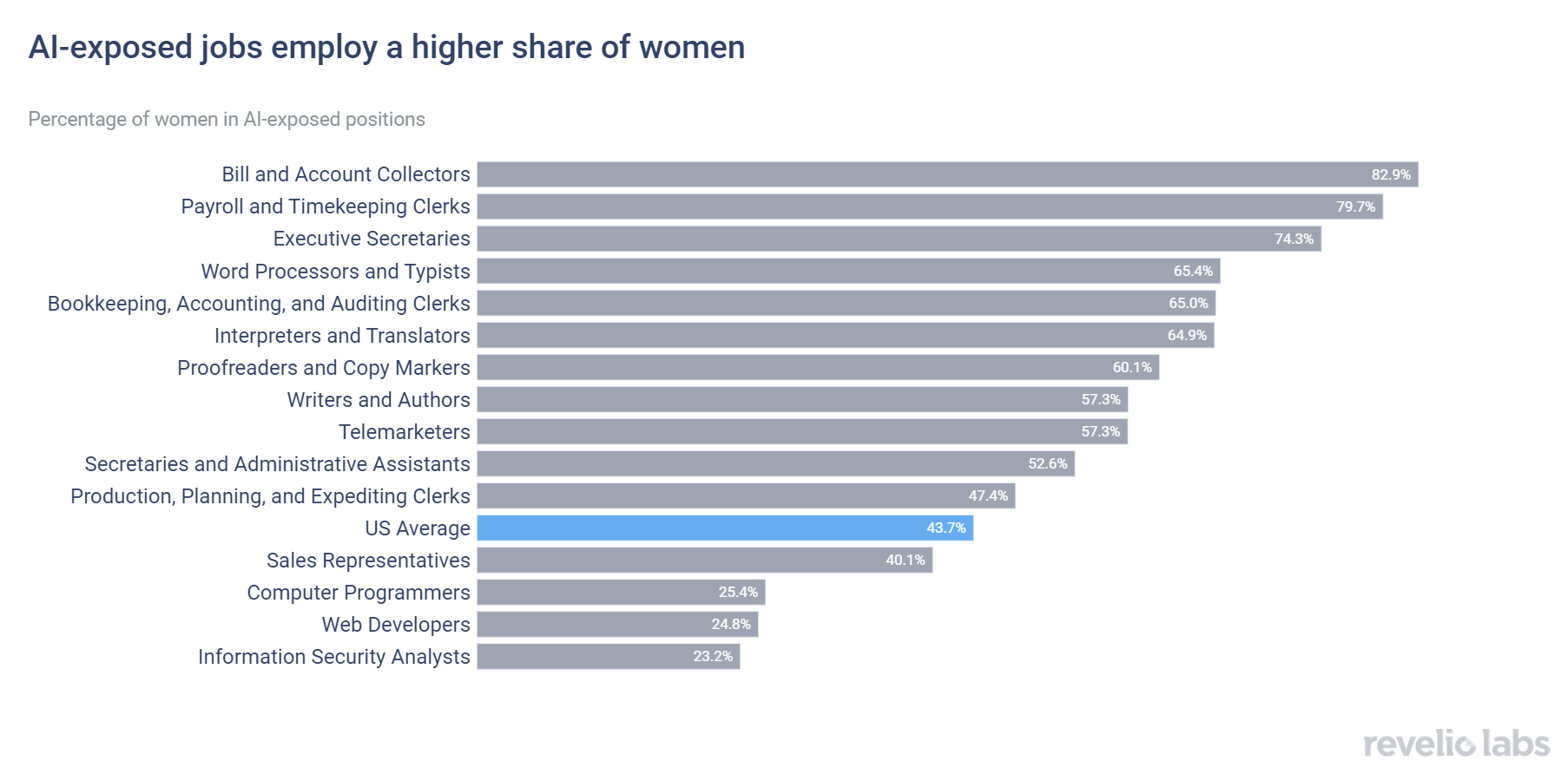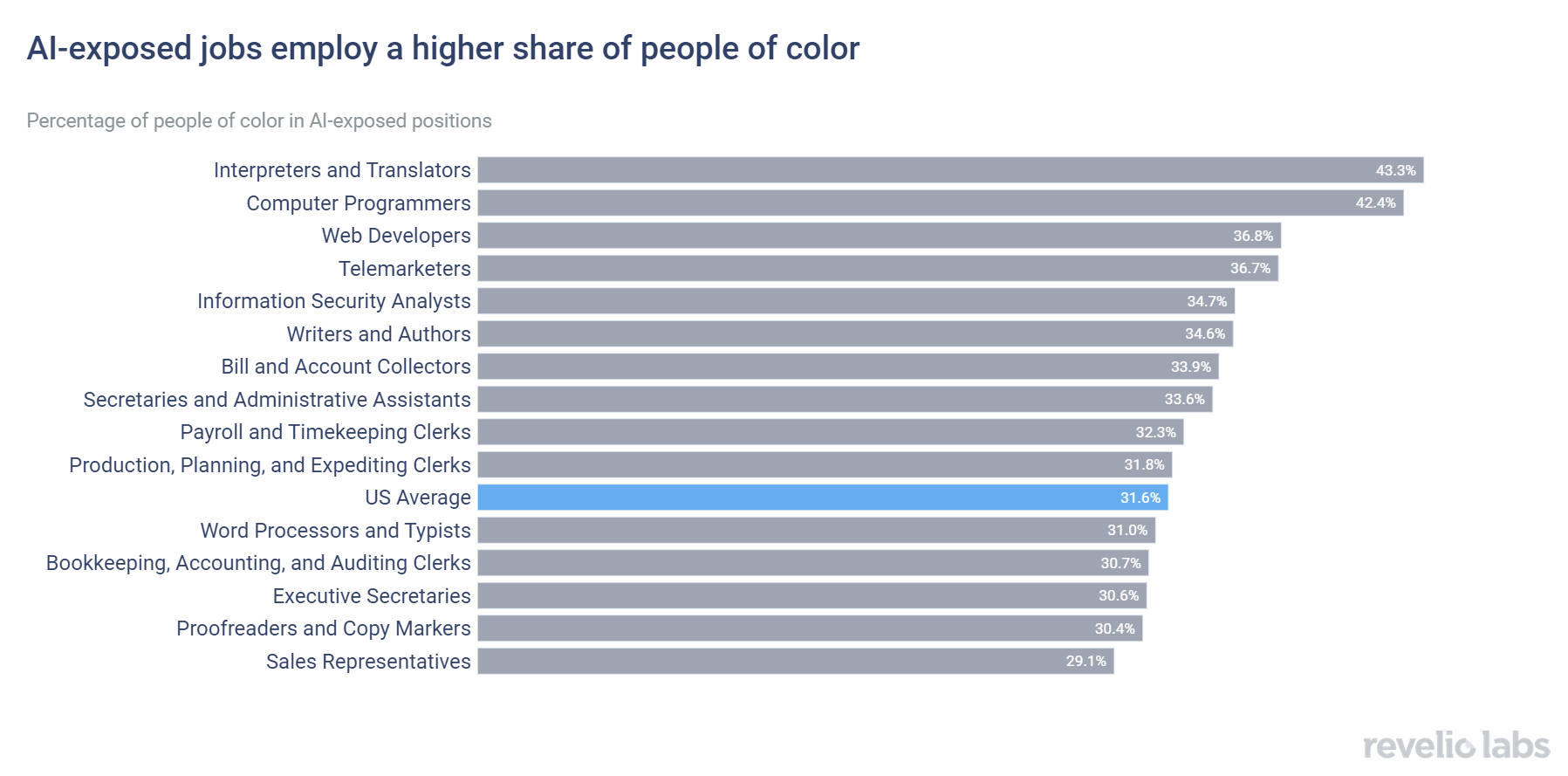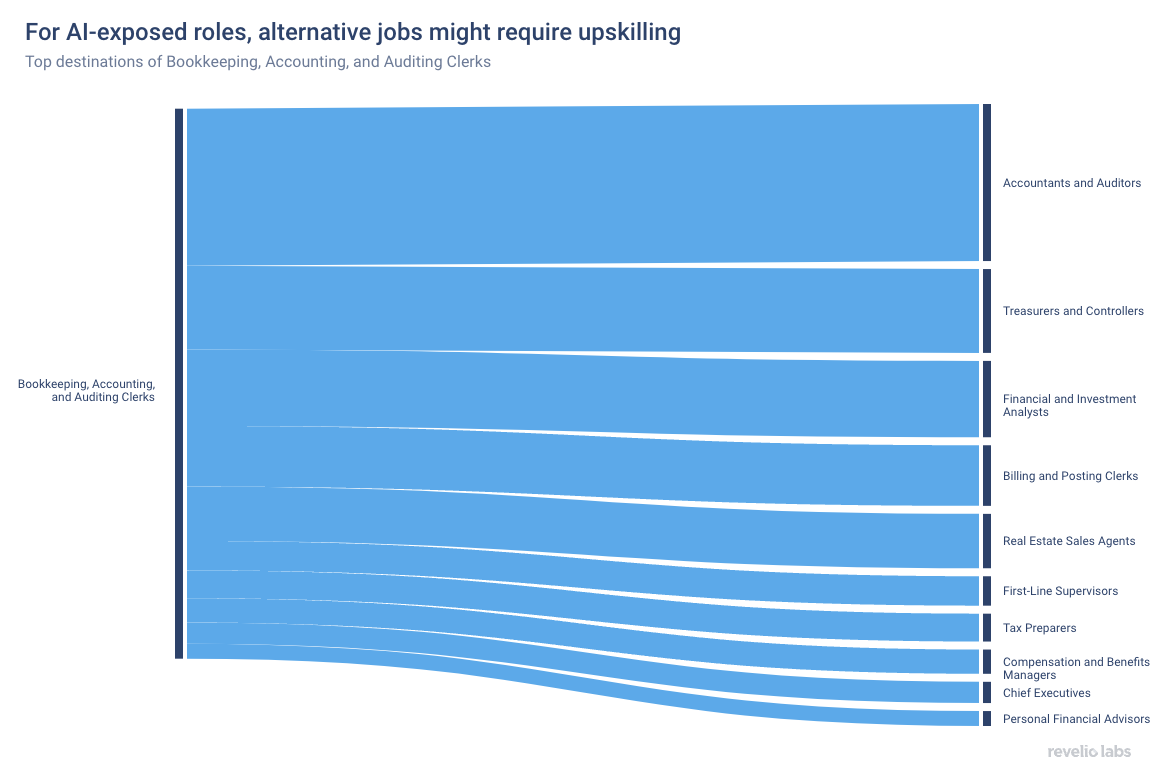AI-Exposed Jobs Employ More Women
Here is how AI will further imbalance the gender opportunity gap

AI tools like ChatGPT will likely have the largest impact on HR and administrative jobs.
These jobs are mostly held by women, and some have high representation of people of color.
Employees in AI-exposed occupations tend to move up to higher-skill roles in the same area—necessitating further investment in their talent.
In a previous newsletter, we highlighted the increasing prevalence of AI in today's workplaces, including its integration into HR departments and Admin jobs. This raises the question: who comprises the workforce in these AI-exposed occupations? In partnership with Bloomberg, this week we look at the gender and ethnicity distributions among these occupations and investigate the unintended consequences of the adoption of AI technologies for women and people of color.
Using the AI exposure scores built by Eisfeldt, Schubert, and Zhang, which compare the capabilities of generative AI with the task requirements of jobs, Revelio Labs identified the 15 most AI-exposed occupations and listed them below. These occupations employ more than 10 million employees in the US, the majority of whom are women, our workforce composition data show.


While AI tools like ChatGPT are not trained to replace a specific demographic, the differential effect of AI comes from the uneven distribution of gender across the labor force. For example, women are underrepresented in technical occupations and overrepresented in "supporting" careers like administrative assistants. It happens to be the case that AI's abilities overlap more with support occupations.


Sign up for our newsletter
Our weekly data driven newsletter provides in-depth analysis of workforce trends and news, delivered straight to your inbox!
Looking at the distribution of people of color paints a similar picture. Many AI-exposed occupations are disproportionately made up of people of color. However, the differences in workforce composition are not as pronounced as for the gender distribution: there are overall 32.9% POC employees in the top exposed jobs—only slightly more than the US average. Nonetheless, it is crucial to acknowledge and address any existing inequities to ensure that the effects of AI adoption do not worsen disparities between ethnic groups.


To see where AI-exposed employees will potentially end up, Revelio Labs examines Bookkeeping, Accounting, and Auditing Clerks as a case study. The graph below breaks down the outflows from this role, giving a sense of the typical next steps in the career ladder. The top destination is Accountants and Auditors, which requires a deeper understanding of the regulatory environment. If mastering the intricacies of Accounting and Auditing proves to be challenging for most employees, AI adoption may leave employees struggling to find alternative employment opportunities.


However, there is also a brighter perspective to consider. AI tools can automate mundane and repetitive tasks performed by Clerks, freeing them up to engage in more productive and fulfilling aspects of their jobs. Realizing this positive outcome hinges upon employees gaining the necessary skills, and thus requires investment not only from employees but also from employers and policymakers in upskilling the current workforce.


